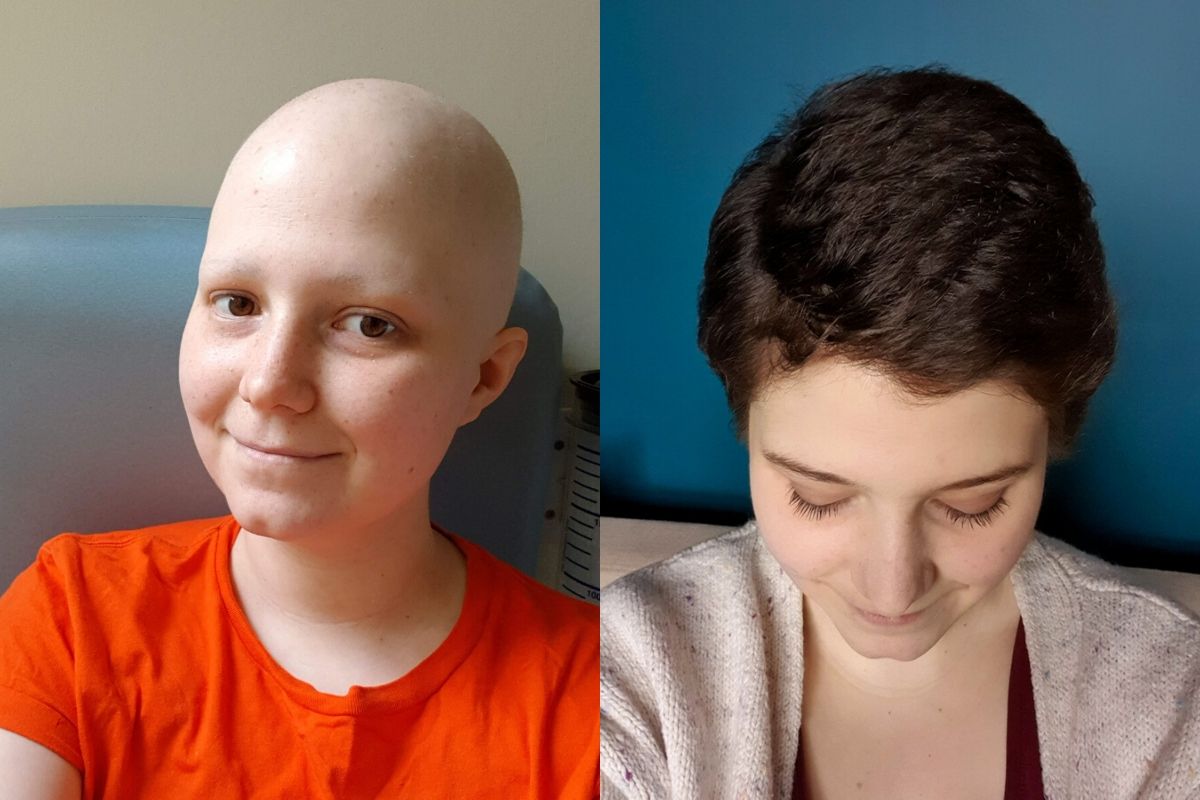
Many patients ask if they’ll lose hair during treatment. The answer isn’t always predictable. Not all chemotherapy drugs cause hair loss. Some thin the hair. Others cause complete shedding. It depends on the drug, dosage, and schedule. Scalp hair is most affected. But eyebrows, lashes, and body hair may also fall out. For some, it happens gradually. Others notice sudden shedding in the shower or on the pillow.
Hair follicles are sensitive to chemotherapy because they are among the fastest-growing cells
Chemotherapy targets rapidly dividing cells. That’s how it slows cancer growth. But hair follicles grow quickly, too. The body doesn’t distinguish between cancer and hair growth. As a result, follicles weaken. Hairs loosen and fall. The process usually begins two to three weeks after starting treatment. You may feel tingling or tenderness on the scalp. That’s often a sign hair loss is beginning.
Hair usually grows back after treatment ends, but the texture or color may change
Regrowth starts slowly. You might see soft fuzz a few weeks after finishing treatment. For some, hair returns thinner or finer. Others notice curls that weren’t there before. Color may shift slightly. These changes are usually temporary. Over time, your natural hair pattern often returns. But it may take six months or more for full regrowth. Patience is essential.
Scalp cooling treatments can reduce blood flow and limit how much chemo reaches hair follicles
Cold caps are one method used to reduce hair loss. They cool the scalp before, during, and after chemo infusions. The cold constricts blood vessels. Less medication reaches the hair roots. This can help preserve follicles. Results vary. Some people keep most of their hair. Others see only modest results. Cold caps aren’t suitable for all treatment types. They must be worn tightly and cause discomfort for some.
Head shaving is a personal choice—some feel more in control when they shave early
Some patients wait until shedding begins. Others shave early to avoid the stress of watching it fall. There’s no right answer. Shaving gives some people a sense of control. It eliminates the surprise and the mess. If you do choose to shave, use clean tools. Avoid nicks or cuts. The scalp becomes sensitive during treatment. Irritation should be minimized.
Wigs, scarves, and hats offer options for covering the head when and if hair loss begins
Some choose wigs that match their natural look. Others try bold new styles. Scarves and hats offer comfort and ease. They protect the scalp from cold or sun. Medical wigs can sometimes be covered by insurance. Ask your care team for documentation. Many specialty shops offer fittings before treatment begins. This helps match the style to your original hair, if desired.
Emotional reactions to hair loss often begin before the first strand falls
Hair is tied to identity. Losing it can feel like losing part of yourself. For some, it signals illness in a way nothing else does. Reactions vary. Some people grieve. Others feel angry or numb. The anticipation can be as intense as the event. Talking to a counselor can help. So can speaking with others who’ve been through it. This part of treatment deserves support, too.
Children may need help understanding why a parent’s or sibling’s hair is changing
Hair loss can affect family dynamics. Young children may feel confused or scared. It helps to explain what’s happening simply and honestly. Let them know hair loss doesn’t mean the treatment isn’t working. Include them in scarf or hat shopping, if appropriate. This makes the process less frightening. Open conversation reduces anxiety for everyone involved.
Gentle hair and scalp care during treatment can reduce irritation and support eventual regrowth
Use mild, fragrance-free shampoos. Avoid harsh brushing or heat styling. The scalp may feel sore or itchy. Light oils or soothing gels can help. Don’t color or chemically treat hair during this time. Let the follicles rest. Once regrowth starts, avoid tight styles. Let the hair settle into its new pattern. Early care supports a healthier return.
Sharing your experience, or keeping it private, is a personal decision that deserves respect
Some people post photos, write blogs, or speak openly. Others tell no one beyond close family. There’s no correct path. Your story is yours to share—or not. Respecting your boundaries matters. Healthcare providers and loved ones should follow your lead. Support looks different for everyone. You choose how visible your journey becomes.
